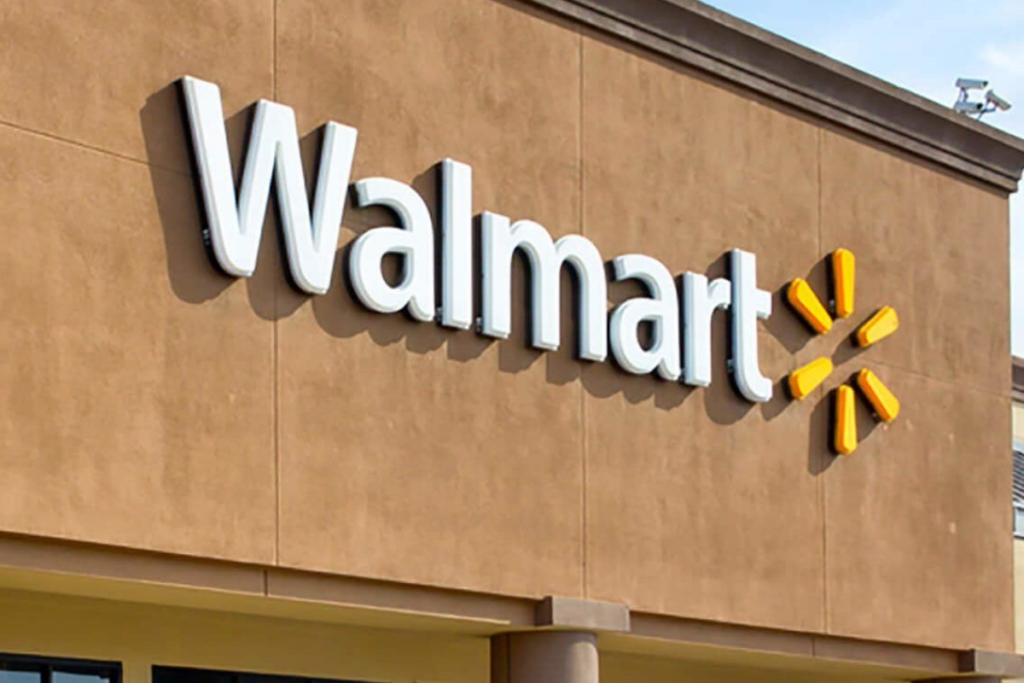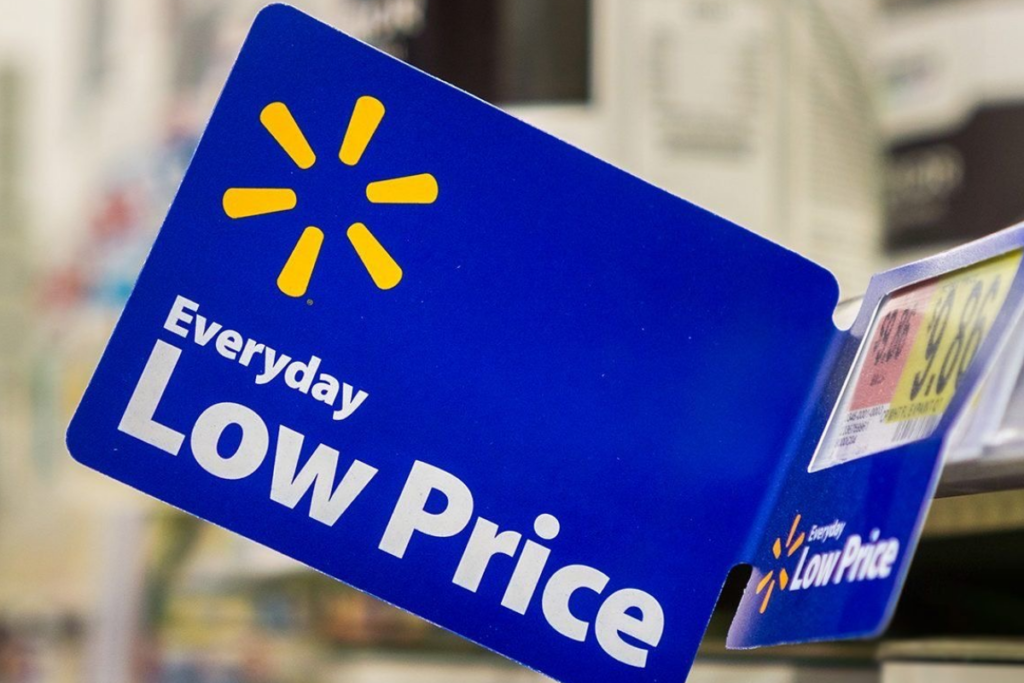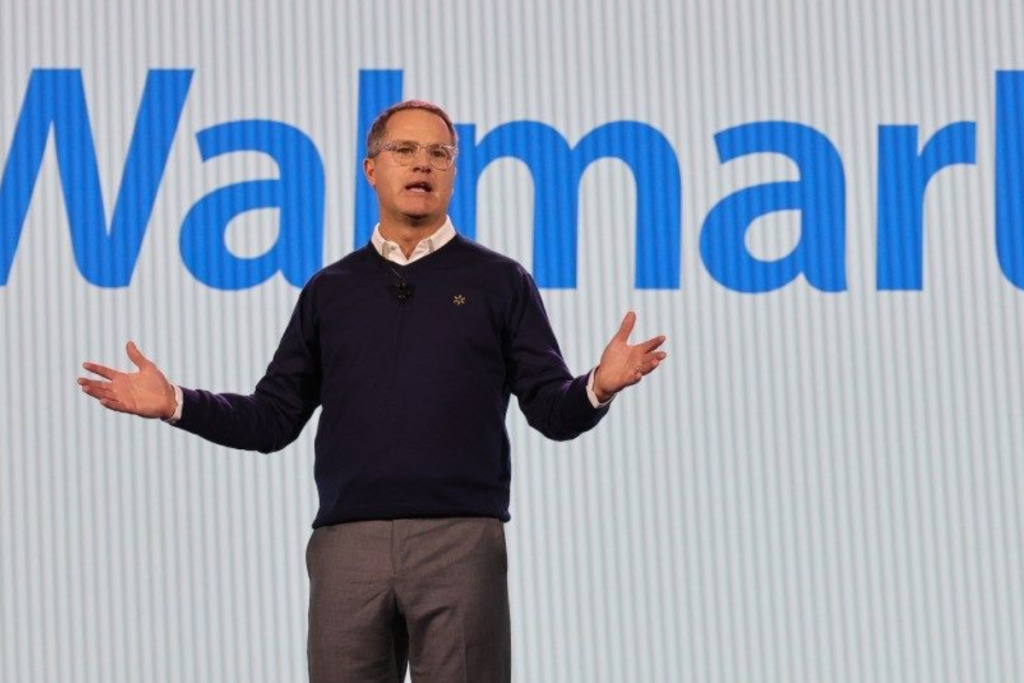Walmart CEO Doug McMillon has announced that prices for many groceries and other items at Walmart have gone down. However, he mentioned that inflation is still a problem for specific products in certain store sections, specifically the aisles with dry groceries and processed foods, like soft drinks.
A Fight for Lower Prices
After the discounter shared its financial results for the second quarter, it mentioned that Walmart has been pushing the companies that provide products for its stores to lower their prices. However, they believe these suppliers should do even more to reduce costs.

The CEO noted that while there is less pressure to raise prices, some suppliers still ask for price increases. “We are actively working against these requests because we think prices should be reduced,” McMillion said.
Financial Report
Walmart’s prices stayed the same for the quarter. This means they didn’t charge more for their products. According to the Chief Financial Officer John David Rainey, they made more money by selling more items. However, prices for some products, like dairy, eggs, sugar, and meat, kept increasing. On the other hand, prices for things like pet food, apples, potatoes, strawberries, sports equipment, and garden supplies either stayed the same or went down.

Walmart’s recent financial report was better than expected. Last Thursday, it raised the stock prices of other retail companies like Target, Best Buy, and Macy’s. Walmart’s strong performance and the good news about its retail sales helped calm worries that consumers might be spending less.
ALSO READ: Walmart Gives Hope Against Possible U.S. Recession Following Home Depot’s Grim Warning
Criticisms and Scrutiny
Walmart’s recent financial report was better than expected. They also updated their outlook to show a solid first half of the year. Rainey mentioned in an interview that shoppers are still careful with their choices and focus more on finding value. He also noted that even though consumers are cautious, Walmart’s leaders are not seeing any significant decline in consumer spending.

All Consumer brands, including Walmart, are facing increased scrutiny. Due to inflation and higher prices, shoppers and politicians are criticizing Walmart. Walmart has faced criticism on TikTok for introducing electronic price labels.
Many worry that retail companies will use technology to raise prices when demand rises. However, Walmart has stated that it is not planning to change its pricing strategy. It also said the new labels are intended to help store employees manage prices more efficiently.
How Are Retail Brands Attracting Customers?
Many companies are working hard to show that their products are worth the money consumers are paying for them. They also offer new discounts because people are more careful about spending money. For instance, McDonald’s introduced a $5 meal deal in late June and kept it available in most locations. Target also did something similar by announcing in late May that it would lower prices on about 5,000 popular items like peanut butter, milk, and meat throughout the summer.

Walmart is also not left out, as it is promoting discounts on various items. From the start of the quarter until July 31, they had 7,200 short-term sales, called “rollbacks,” across different product categories. This number represents a 35% increase in the discounts on food items compared to last year.
Why Is Walmart Marking Down Prices?
Walmart marks down prices to attract more customers, stay competitive, and increase sales volume. By lowering prices, Walmart aims to improve consumer traffic and boost sales. These can help offset lower profit margins with increased sales volume.
According to McMillon, Walmart is lowering prices because they don’t want product margins to improve. “We’re not raising prices. We’re lowering prices,” McMillon said. “We don’t want product margins to go up. When we talk about margin improvement in our company, it’s a business mix.”

The low prices don’t seem to affect the company; its profits are increasing more quickly than its sales. The company is making more money from other areas, such as high-profit advertising, rather than charging higher product prices.
ALSO READ: Walmart Slashes Price on $130 Rolling Utility Cart to $35—Shoppers Says It’s ‘Helpful in Organizing’
Why Are Walmart Prices Different at Different Locations?
Walmart prices differ at various locations because they adjust based on local conditions. Many factors specific to each location cause varying prices. These factors include the number of consumers shopping in the area (demand), how much it costs to transport goods to that location, local taxes, and any special promotions or discounts for that area.

Larger stores or those in different formats might also have different prices. These adjustments help Walmart stay competitive and effectively meet local needs.
What Is the Markup Percentage at Walmart?
Walmart’s markup percentage varies depending on the product category. On average, retail markups can range from 10% to 50%. However, specific percentages can be lower for high-volume items or essential goods.

Walmart focuses on offering low prices and competitive margins, so its markup is usually lower than that of some other retailers.
What Are Walmart’s Everyday Low Prices?
Walmart’s “Everyday Low Prices” (EDLP) strategy focuses on consistently offering low prices on a wide range of products rather than relying on frequent sales or promotions.

The goal is to reassure customers that they get the best prices daily, not just during special sales events. This strategy aims to attract price-conscious shoppers and drive higher sales volumes. It also helps to build customer loyalty by eliminating the need for price comparison and the pressure of waiting for discounts.
You Might Also Like:
Walmart Ends Major Partnership, Leaving Customers Frustrated
Walmart Gives Hope Against Possible U.S. Recession Following Home Depot’s Grim Warning
Wizz Air Introduces $550 ‘All You Can Fly’ Annual Subscription Pass
World’s Largest Steelmaker Warns of an Imminent Industry Crisis Worse Than 2008
Starbucks Awards Incoming CEO Brian Niccol $85 Million in Cash and Stock as He Leaves Chipotle

